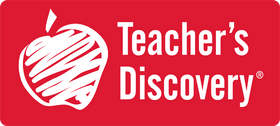Say goodbye to bland, boring, and formulaic research papers, and hello to Teaching the Research Paper They Want to Write! This research-based reading and writing unit provides a framework for you to facilitate students’ reading of intriguing, high-quality modern informational texts while simultaneously supporting students’ writing of personal and evidence-based research papers. The process uses mentor texts from entertaining, best-selling authors, and teaches students to explore, analyze, and investigate. Following the model of the mentor texts, students then formulate their own research questions and crowdsource research ideas.
Throughout this unit, students become investigative reporters, researching what the experts say and investigating phenomena in their own lives. By the end, students have crafted thoughtful, well-structured, and evidence-based research papers, and incorporated their own personal reflections. Their subsequent writing is fresh, inspiring, and interesting. With this process, teaching research writing becomes a joy, and the final papers are a joy to read.
Table of Contents
Introduction
Purpose
About This Resource
How to Use This Resource
Unit Outline
Step 1: Selecting Mentor Texts
- Lesson Plan 1A: Introduction to the Mentor Text (Whole-Class Mentor Text)
- Lesson Plan 1B: Book Pass Activity (Guided Student Choice Texts)
Step 2: Investigating the Mentor Text Part I
- Lesson Plan 2: Thinking About the Mentor Text
- Lesson Plan 3: Learning the Terminology of Investigation
- Lesson Plan 4: Investigating the Mentor Text
- Lesson Plan 5: Determining the Mentor Author's Research Methods
Step 3: Crafting the Research Question and Methods
- Lesson Plan 6: Crafting a Research Question Through Modeling and Crowdsourcing
- Lesson Plan 7: Crowdsourcing Ideas--Student Research Proposal
- Optional Troubleshooting Lesson Plan: This Is NOT an Experiment
Step 4: Investigating the Mentor Text Part II
- Lesson Plan 8: Author's Craft and Citations
Step 5: Utilizing Secondary Research
- Lesson Plan 9: Annotated Bibliographies
- Lesson Plan 10: What Goes into a Citation
Step 6: Investigating the Mentor Text Part III
- Lesson Plan 11: Determining Theme
Step 7: Firsthand Research Analysis
Step 8: Crafting the Final Paper and Presentation Part I
- Lesson Plan 12: Author's Craft, Revisited
- Lesson Plan 13: Citing Sources in Your Research Paper
Step 9: Assessing the Mentor Text Study
Step 10: Crafting the Final Paper and Presentation Part II
Rubrics
Sample Student Work
Appendix
- Recommended Mentor Texts
- Standards Alignment Chart
©2020. High school. Reproducible. 139 pages.
Book Download: PDF. We recommend Foxit PDF for viewing or editing PDFs.
Print Book: Spiral-bound. 8.5 x 11 inches.
Teaching the Research Paper They Want to Write Book
Teaching the Research Paper They Want to Write Book - Teaching the Research Paper They Want to Write Book Download is backordered and will ship as soon as it is back in stock.
Couldn't load pickup availability


Research Writing Meets Student Choice
Description
Description
Say goodbye to bland, boring, and formulaic research papers, and hello to Teaching the Research Paper They Want to Write! This research-based reading and writing unit provides a framework for you to facilitate students’ reading of intriguing, high-quality modern informational texts while simultaneously supporting students’ writing of personal and evidence-based research papers. The process uses mentor texts from entertaining, best-selling authors, and teaches students to explore, analyze, and investigate. Following the model of the mentor texts, students then formulate their own research questions and crowdsource research ideas.
Throughout this unit, students become investigative reporters, researching what the experts say and investigating phenomena in their own lives. By the end, students have crafted thoughtful, well-structured, and evidence-based research papers, and incorporated their own personal reflections. Their subsequent writing is fresh, inspiring, and interesting. With this process, teaching research writing becomes a joy, and the final papers are a joy to read.
Table of Contents
Introduction
Purpose
About This Resource
How to Use This Resource
Unit Outline
Step 1: Selecting Mentor Texts
- Lesson Plan 1A: Introduction to the Mentor Text (Whole-Class Mentor Text)
- Lesson Plan 1B: Book Pass Activity (Guided Student Choice Texts)
Step 2: Investigating the Mentor Text Part I
- Lesson Plan 2: Thinking About the Mentor Text
- Lesson Plan 3: Learning the Terminology of Investigation
- Lesson Plan 4: Investigating the Mentor Text
- Lesson Plan 5: Determining the Mentor Author's Research Methods
Step 3: Crafting the Research Question and Methods
- Lesson Plan 6: Crafting a Research Question Through Modeling and Crowdsourcing
- Lesson Plan 7: Crowdsourcing Ideas--Student Research Proposal
- Optional Troubleshooting Lesson Plan: This Is NOT an Experiment
Step 4: Investigating the Mentor Text Part II
- Lesson Plan 8: Author's Craft and Citations
Step 5: Utilizing Secondary Research
- Lesson Plan 9: Annotated Bibliographies
- Lesson Plan 10: What Goes into a Citation
Step 6: Investigating the Mentor Text Part III
- Lesson Plan 11: Determining Theme
Step 7: Firsthand Research Analysis
Step 8: Crafting the Final Paper and Presentation Part I
- Lesson Plan 12: Author's Craft, Revisited
- Lesson Plan 13: Citing Sources in Your Research Paper
Step 9: Assessing the Mentor Text Study
Step 10: Crafting the Final Paper and Presentation Part II
Rubrics
Sample Student Work
Appendix
- Recommended Mentor Texts
- Standards Alignment Chart
©2020. High school. Reproducible. 139 pages.
Book Download: PDF. We recommend Foxit PDF for viewing or editing PDFs.
Print Book: Spiral-bound. 8.5 x 11 inches.
Reviews (0)
Reviews (0)
Payment & Security
Payment methods
Your payment information is processed securely. We do not store credit card details nor have access to your credit card information.



























